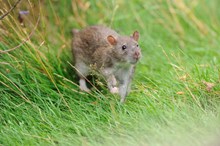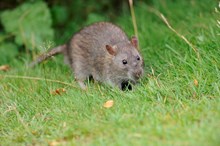22 May, 2015
Role of brown rats in seabird predation
The potential impact of brown rats on colonies of Manx Shearwater seabirds on the Isle of Rum has been explored, a new report from Scottish Natural Heritage (SNH) has highlighted.
The 41 square-mile island is a National Nature reserve (NNR) managed by SNH and is also home to introduced brown rats or Rattus norvegicus.
They predate the Manx Shearwaters, or ‘Manxies’ as they are affectionately known. The Manxies, as a burrowing bird, are at risk from the rats. What is not certain is the precise impact rats have on the population, and how the Manxies may respond.
Rum is of international importance for Manx shearwaters with around a quarter of the world’s breeding population – or 100,000 breeding pairs - nesting in the high mountains. The island offers refuge from many of the predators present on the mainland. To avoid the predators which are on the island, they fly to their burrows under cover of darkness.
However as brown rats are now established on the island there is a potential risk from brown rat predation as seen on other island situations with burrow nesting seabirds.
SNH has a duty to ensure the long-term security of these globally-important Manx shearwater colonies.
The commissioned report ‘The role of brown rat (Rattus norvegicus) predation in determining breeding success of Manx shearwaters (Puffinus puffinus) on Rum’ is the written element of a project which aimed to investigate the role of brown rats in determining Manx shearwater breeding success on Rum. It also aimed to detect and quantify any negative impacts through a rat removal study.
The cost of removing rats from Rum is estimated at around £4.6 million. In order to assess whether an intensive rat eradication campaign is justified or necessary, this project has investigated the impacts of rats in the colony and the impacts of rat removal.
Chris Donald, SNH South Highland operations manager, said: “The report highlights some of the issues that we face in ensuring that we have a healthy and thriving biodiversity on Rum.
“Any scheme to remove the rats would be extremely costly. All eradication schemes, no matter where, are expensive.
“And while at SNH we have world-leading experience in high-technology removal projects – the Hebridean Mink Project has been lauded by international scientists for its approach – we do have to consider the public view.
“Removal is a valuable tool that we can use if necessary. Invasive rodents have been implicated in declines and extinctions of seabird populations worldwide. However the impact of rat species is regarded as one of the most significant global threats to seabirds.
“So we need to consider our next moves amid the knowledge that
hundreds of rodent eradication campaigns have been undertaken on islands worldwide. Brown rats were also eradicated from the neighbouring island of Canna in 2005/2006 to restore breeding habitats for Manx shearwaters and other seabirds.”
The findings date back to 2010 when a removal experiment was initiated. It aimed to establish the effect of removing rats from Manx shearwater colonies on the island of Rum by comparing Manx shearwater breeding success between sites treated with anticoagulant rodenticides with breeding success at untreated (control) sites.
Three study sites of around 30 hectares were used; Askival, Hallival and Clough’s Crag. The Hallival study site was treated with rodenticides in 2010 and 2011, and the Askival study site was treated in 2012 and 2013.
Levels of brown rat activity were measured at all three study sites two or three times a year using carbon-coated tracking plates.
Rat activity varied between sites and between years, and appeared to be higher in the final year of the study particularly at the untreated Clough’s Crag site.
Manx shearwater nest burrows were checked at each site twice each year; once during the egg stage (usually in late June) and once during the chick stage (usually in late August).
It is not known whether levels of rat activity at the Clough’s Crag site in 2013 are atypical or whether the low levels of rat activity seen during the first three years of the study are more unusual.
And it is possible that through their remoteness and lack of resources to support rat populations outside the shearwater breeding season, many of the Manx shearwater colonies are largely protected from the negative effects of rats in most years.
Report at: http://www.snh.gov.uk/publications-data-and-research/publications/search-the-catalogue/publication-detail/?id=2259
Contact information
- Name
- SNH Media
- snhmedia@snh.gov.uk
NatureScot is Scotland's nature agency. We work to enhance our natural environment in Scotland and inspire everyone to care more about it. Our priority is a nature-rich future for Scotland and an effective response to the climate emergency. For more information, visit our website at www.nature.scot or follow us on X at https://x.com/NatureScot
’S e NatureScot buidheann nàdair na h-Alba. Bidh sinn a’ neartachadh àrainneachd na h-Alba agus a’ brosnachadh dhaoine gu barrachd suim a chur ann an nàdar. Tha e mar phrìomhachas againn gum bi nàdar na h-Alba beairteach agus gun dèilig sinn gu h-èifeachdach le èiginn na gnàth-shìde. Tha an tuilleadh fiosrachaidh aig www.nature.scot no air X aig https://x.com/NatureScot


